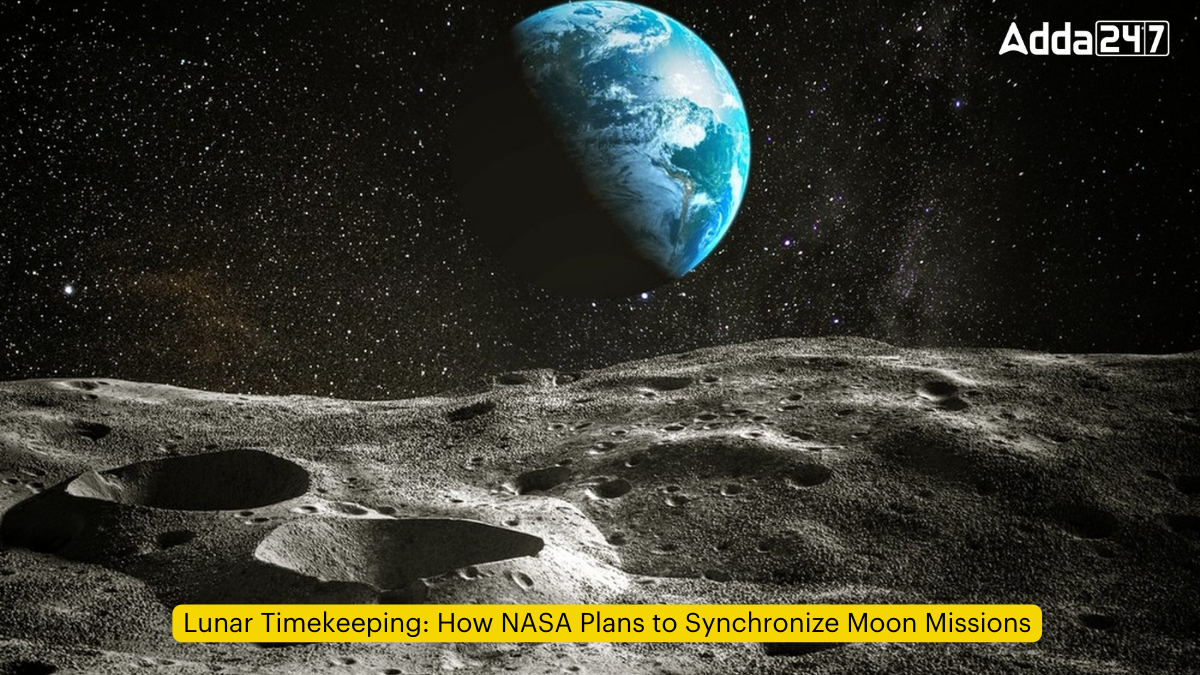As part of the Artemis program, which intends to bring humans back to the lunar surface, NASA and the European Space Agency (ESA) are working together to create a common time system for the moon. The project aims to meet the requirement for a common timekeeping system to manage missions from various nations and private organizations.
What are the importance of Unified Lunar Time System?
There are a number of planned lunar missions, including ones by China, India, and commercial enterprises; however, the lack of a consistent time zone on the moon creates logistical difficulties. According to Pietro Giordano, manager of ESA’s Galileo Timing and Geodetic Navigation System, “a common lunar time system is essential for ensuring the successful operation and coordination of these missions.”
What are the Challenges in Establishing a Lunar Time Zone?
Lunar Day Night cycle:
Timekeeping is complicated by the moon’s day-night cycle, which lasts for around 29.5 Earth days. This extended cycle requires a different method to maintain a stable time reference than Earth’s 24-hour day.
Lack of Natural Timekeeping Reference
The division of 24 hours into Earth’s time zones is based on this rotation. Since there isn’t a comparable natural reference point on the moon, a brand-new timekeeping method must be developed.
Coordinating International Mission:
It is difficult to come to an agreement on a common time zone that satisfies the requirements of numerous corporate and international missions. There could be differences in the needs and preferences for timekeeping amongst missions.
Technical Synchronization:
It is difficult to implement precise navigation and communication systems to ensure precise timekeeping throughout many lunar missions. Every system and piece of equipment needs to be adjusted for the new time zone.
Communication Delay:
The communication delay between Earth and the moon, about 1.28 seconds each way, must be considered to ensure accurate coordination and operation of mission.
Operational Practicalities:
It will take careful planning and testing to adjust to the new time zone for day-to-day operations, such as organizing events and working with teams stationed on Earth.
Solutions:
A suggested solution is to establish Coordinated Universal Time (UTC) as the foundation for the lunar time zone, which would offer a uniform point of reference for all lunar operations. A different strategy is to design a new time scale that is unique to the lunar environment and needs.
What are the future steps?
In order to guarantee precise timing and synchronization for lunar missions, NASA and ESA are developing new technologies. The Artemis program’s success and the advancement of lunar exploration in the future depend on these initiatives. Giordano stated “Numerical synchronization is essential for multiple facets of lunar operations, such as scientific experiments, communication, and navigation,”. NASA’s Artemis mission intends to put a woman and a man on the moon by 2024. One important step toward promoting global cooperation and guaranteeing the success of multi-national lunar missions is the establishment of a lunar time zone.




 SCORP: India’s First Legged Mobile Manip...
SCORP: India’s First Legged Mobile Manip...
 ISRO's Successfully Lift Off Anomaly in ...
ISRO's Successfully Lift Off Anomaly in ...
 MeitY Launches PARAM SHAKTI Supercomputi...
MeitY Launches PARAM SHAKTI Supercomputi...







